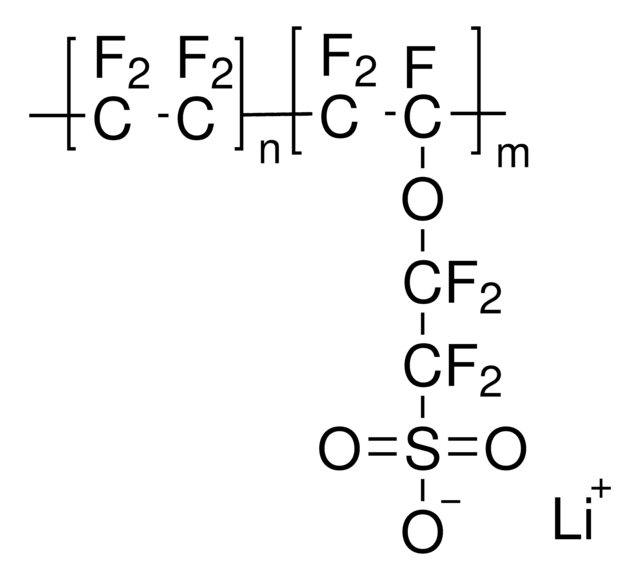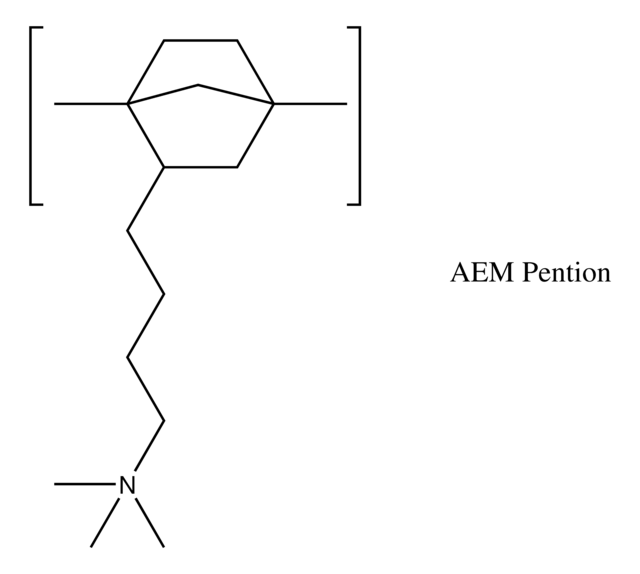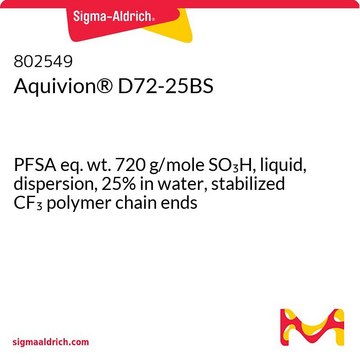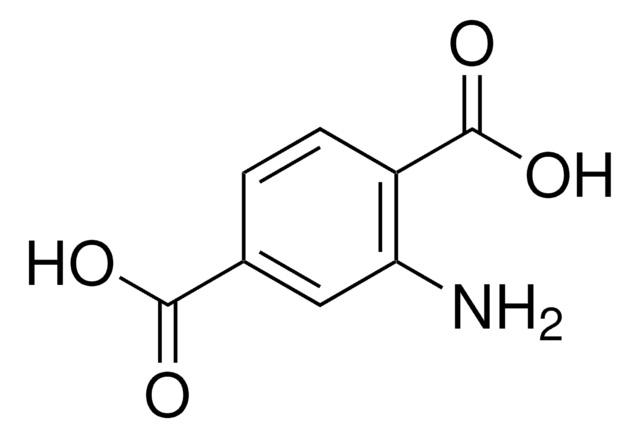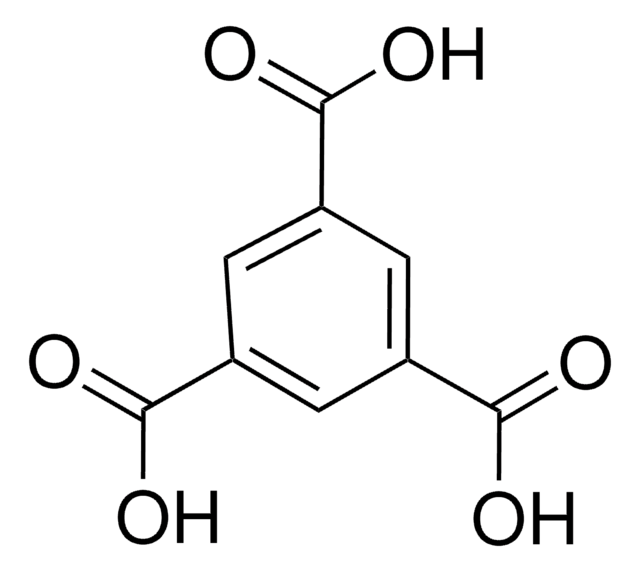Key Documents
802735
Aquivion® E98-09S
membrane sheet, contains CF3 polymer chain ends as stabilizer, PFSA eq. wt. 980 g/mole SO3H, L × W × thickness 18 cm × 18 cm × 90 μm
Synonim(y):
Aquivion® SO3H, Tetrafluoroethylene-perfluoro(3-oxa-4-pentenesulfonic acid) copolymer, Ethanesulfonic acid
About This Item
Polecane produkty
Postać
membrane sheet
zawiera
CF3 polymer chain ends as stabilizer
dł. × szer. × grubość
18 cm × 18 cm × 90 μm
Szukasz podobnych produktów? Odwiedź Przewodnik dotyczący porównywania produktów
Opis ogólny
Zastosowanie
Inne uwagi
Membranes are packed and sealed in a barrier protection pouch inside a cardboard box to prevent damage or deterioration. It is recommendable storing the product in a clean, humidity-controlled environment protected from direct sunlight or other sources of irradiation or heat. Sheet dimensions are based on product conditioned at 23 °C and about 50 % relative humidity. They may slightly vary upon exposure to different ambient conditions. Maximum temperature rating is 230°C, overheating will result in polymer degradation, discoloration and release of toxic volatile decomposition products.
Informacje prawne
Kod klasy składowania
11 - Combustible Solids
Klasa zagrożenia wodnego (WGK)
WGK 3
Temperatura zapłonu (°F)
Not applicable
Temperatura zapłonu (°C)
Not applicable
Wybierz jedną z najnowszych wersji:
Certyfikaty analizy (CoA)
Nie widzisz odpowiedniej wersji?
Jeśli potrzebujesz konkretnej wersji, możesz wyszukać konkretny certyfikat według numeru partii lub serii.
Masz już ten produkt?
Dokumenty związane z niedawno zakupionymi produktami zostały zamieszczone w Bibliotece dokumentów.
Produkty
Advances in the electrochemical conversion of water to and from hydrogen and oxygen have principally been achieved through the development of new materials and by understanding the mechanisms of the degradation of proton exchange membrane fuel cells (PEMFC) during operation.
Nasz zespół naukowców ma doświadczenie we wszystkich obszarach badań, w tym w naukach przyrodniczych, materiałoznawstwie, syntezie chemicznej, chromatografii, analityce i wielu innych dziedzinach.
Skontaktuj się z zespołem ds. pomocy technicznej
